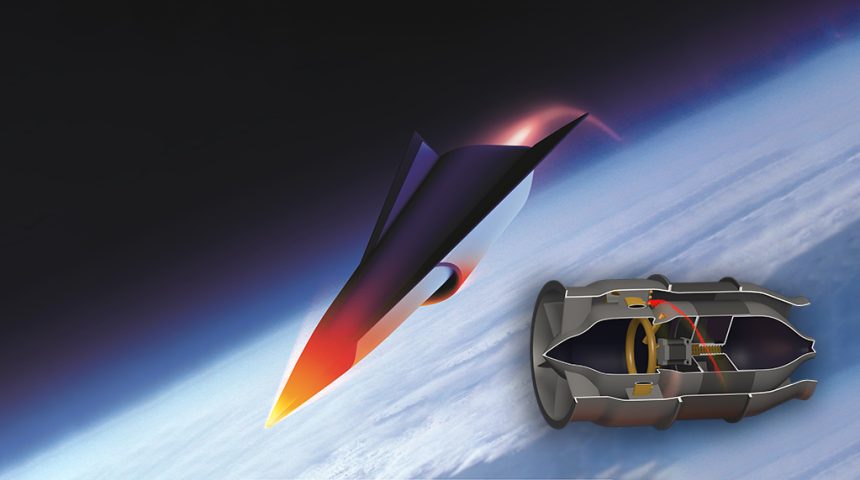The Hypersonic Dual-Mode Ramjet test, believed to be the first of its kind, exploited rotating detonation combustion technology.
General Electric Aerospace announced a successful demonstration of hypersonic dual-mode ramjet (DMRJ) rig which uses rotating detonation combustion (RDC) technology in a supersonic flow stream. The test, believed to be a world-first, could help enable high-speed, long-range flight with increased efficiency.
The demonstration was performed at the company’s Research Center in Niskayuna, New York, which is currently pursuing a comprehensive portfolio of technology programs to develop and scale hypersonic capabilities, including high-temperature materials and high-temperature electronics. This effort, also supported by DARPA, the Air Force Research Laboratory and the Missile Defense Agency, is the product of more than a decade’s worth of direct hypersonic-related research by GE Aerospace and was first mentioned during this year’s Paris Air Show.
“As the aerospace sector sets its sight on the future of hypersonics, GE Aerospace is well positioned with the right capabilities, experience, and scale to be a leader in driving new developments for our customers,” said Amy Gowder, President and CEO, GE Aerospace, Defense & Systems. “The highly successful demonstration of a DMRJ with RDC is an outgrowth of our 10+ years of RDC work, including the strategic acquisition of Innoveering that has brought leading technologies and experience in hypersonic propulsion and ramjets.”
A typical air-breathing DMRJ propulsion system can only begin operating when the vehicle achieves supersonic speeds greater than Mach 3. In fact, since ramjet (and scramjet) engines don’t have rotating parts (compressor and turbine) as turbojet and turbofan engines, they rely on specially designed air inlets to compress the air to the pressure required for the combustion.
The efficiency, however, only gets sufficiently high when the speed reaches at least Mach 2, due to the higher temperature and pressure obtained in the combustion chamber. This is why ramjets usually need other means to reach the minimum speed for ignition, such as rocket boosters or, in the SR-71 Blackbird, dual cycle turbo-ramjet engines.
GE Aerospace engineers are working on a rotating detonation-enabled dual mode ramjet that is capable of operating at lower Mach numbers, enabling the flight vehicle to operate more efficiently and achieve longer range. The RDC technology enables higher thrust generation more efficiently, at an overall smaller engine size and weight, by combusting the fuel through detonation waves instead of a standard combustion system that powers traditional jet engines today.
The “rotating” part of the name refers to the fact that this combustion produces a continuous pressure wave that rotates around an annular combustion chamber, before being expelled as exhaust gas and accelerated through the propelling nozzle, producing thrust. According to the company, it took 12 months of work to get to this final demonstration, with the next goal being the demonstration of a full DMRJ with RDC at scale next year.









